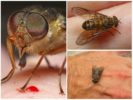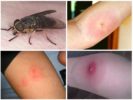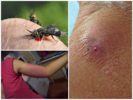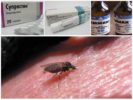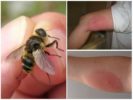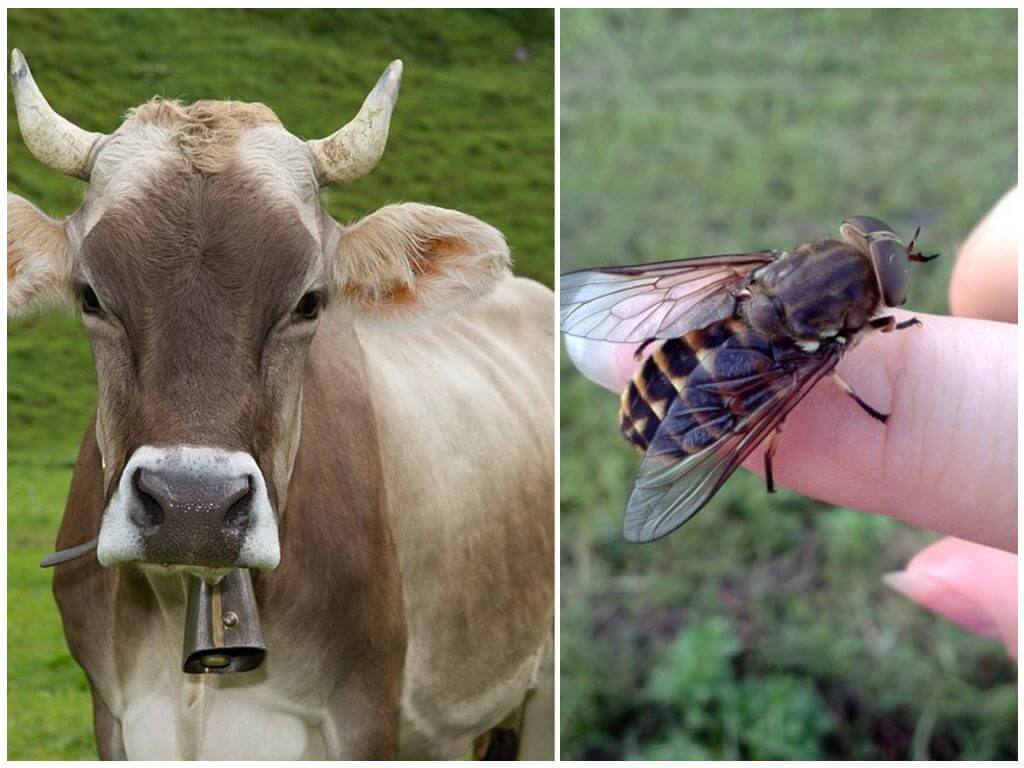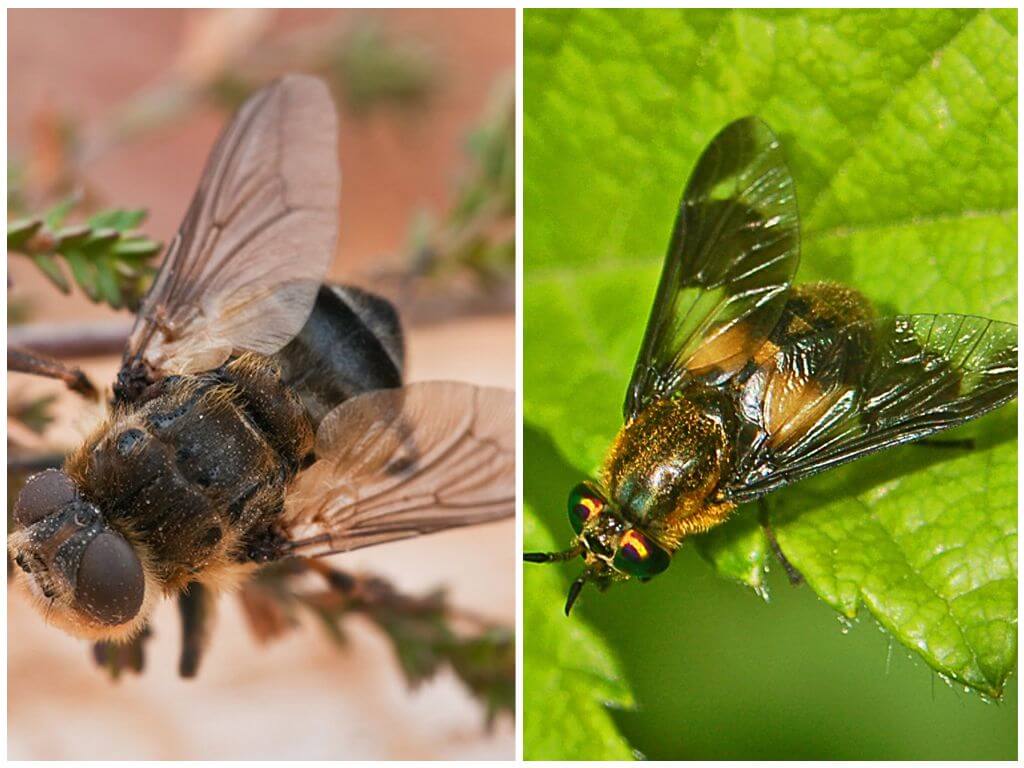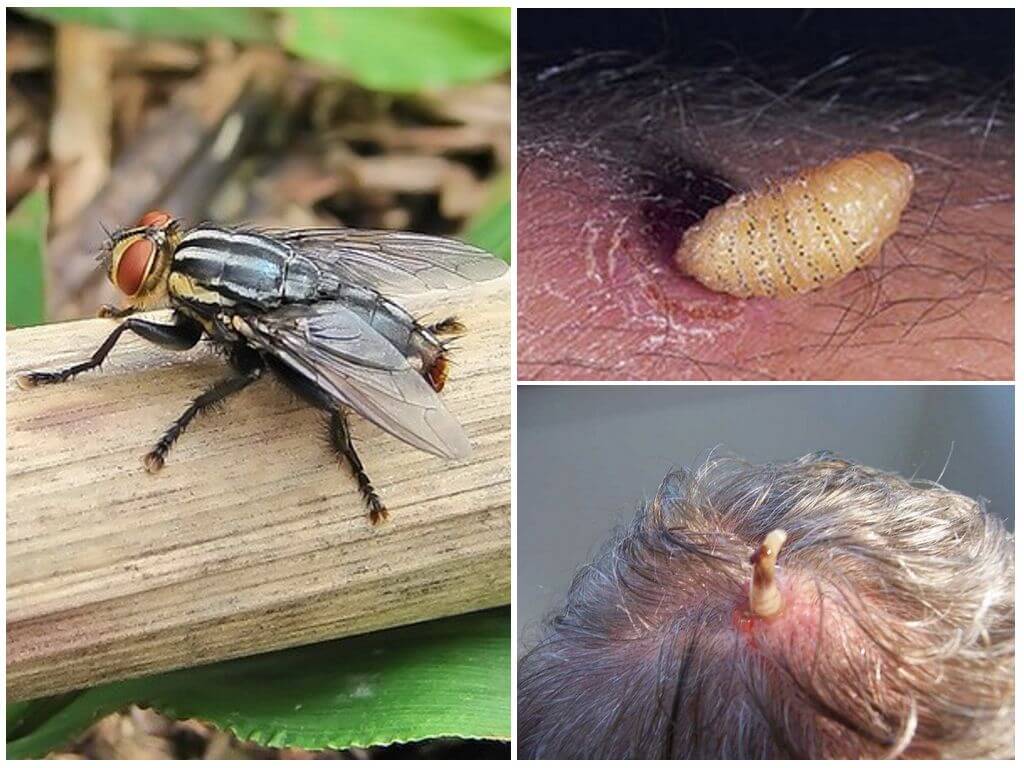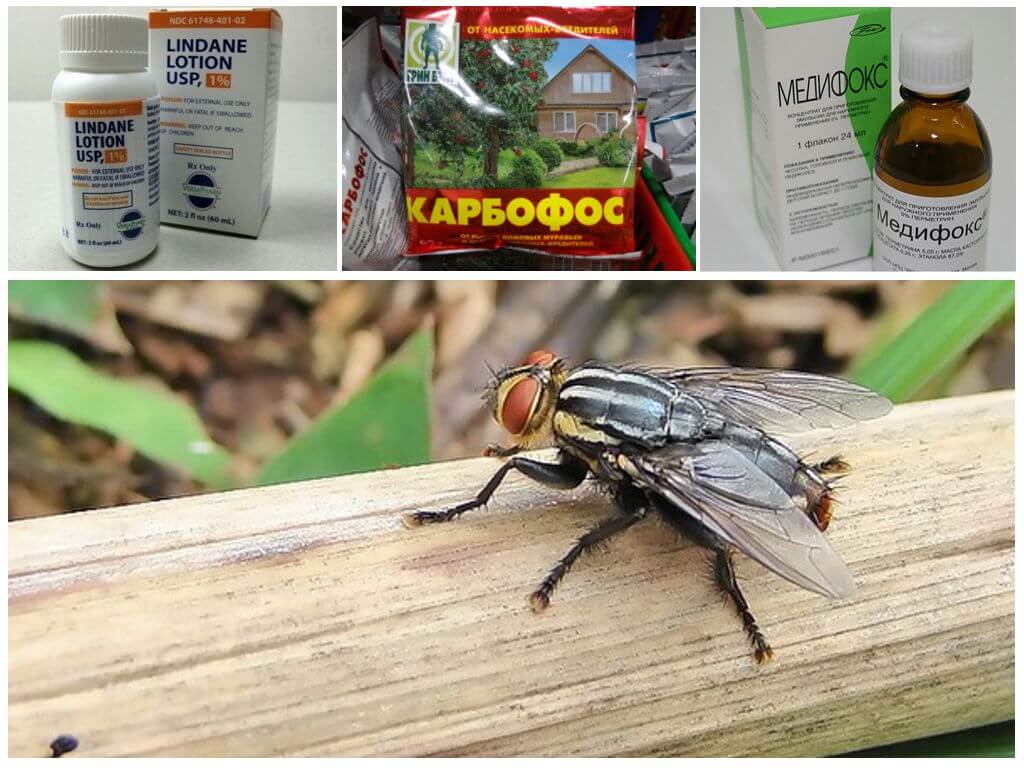- Horsefly
- Gadfly bite
- The consequences of a bite of a gadfly
- Medicines to relieve bite swelling
- Gadfly bite
In hot summers, it is good to relax near the water or in the forest. Coolness calms and relaxes. Thoughts flow lazily and slowly. Everything is so peaceful, but danger is often hidden in this calm. Blood-sucking insects do not sleep and patiently wait for their victims. The greatest danger is a bite of a gadfly or horsefly.
general characteristics
People often call the gadfly all the big gray flies that attack a person, painfully biting their skin and sucking blood. In fact, horseflies do this. Gadfly not a bloodsucker. This insect lives off of the nutrients that it has accumulated in the larval phase. Their mouth apparatus is not developed; during the life they do not eat. They are more like bumblebees.
But then why gadflies bite people - a question that not everyone can find the answer to. Males consume only nectar of flowers, but a fertilized female is looking for a warm-blooded incubator. Therefore, the bite of the gadfly has another purpose: to lay eggs under the skin of the victim. Typically, the main hosts for the offspring of these insects are cattle, horses, camels, and deer. Larvae live and develop in the body of their master until the moment when they turn into adults. And the life cycle repeats again. Parasitization in the human body is very rare.
Interesting!
There are about 150 species of these insects in the world, but one person attacks the human skin gadfly. Fortunately, it is found only in Central America.
Common horsefly information

A simple person who does not have serious knowledge in biology cannot distinguish gadfly from horsefly, which belongs to the detachment of dipterans, but knows that the bite of a fly flies can be painful, so it fears such an insect. Horsefly is a blood-sucking parasite. It lives in forest, taiga, forest-steppe zones. In arid areas, the insect can be found mainly near rivers and lakes, in the mountains it settles to the borders with eternal snows.
The people are called horseflies by gadflies. Only fertilized females, who need blood for the development of eggs, bite humans and animals. Males are smaller and feed on plant nectar. Females have proboscis in the oral apparatus, with which they cut the victim’s skin and inject substances that prevent blood coagulation into the wound.
The length of the insect is from 6 to 30 mm. The color of the wings is gray, marble or it can be variegated. Bloodsuckers fly in fine weather without rain and wind. Air temperature should not be lower than +15, but not higher than +32 degrees. Beyond these temperature limits, bloodsuckers are inactive.
On a note!
The most common representatives in our country are raincoats, lacewings and horseflies. They show marked activity before the rain, but in damp weather you will not see them. Only rains can attack a person even during light rainfall.
What happens if the gadfly bites

If the gadfly has bitten a person, then it is impossible not to notice, since a strong burning sensation and pain is immediately felt, redness appears on the skin, allergic reactions can occur. A photo of a gadfly bite demonstrates the effects of an insect attack. Blood in the wound does not clot for a long time, so you need try to get rid of all insectsso as not to be re-attacked. Gadgets find a victim with their eyes, which means that you can escape from a bloodsucker.
Immediately occurs compaction, swelling and redness after a bite of the gadfly. The skin begins to itch and itch.An allergic person may feel dizzy, fever, swollen lymph nodes, swelling and marked redness in the bite area. If there are no complications in the form of allergic reactions (insect saliva is an allergen), then all these unpleasant phenomena disappear in a few days.
The bite of the gadfly is itchy. A person combing the skin around the wound can introduce an additional infection that will require further treatment. But an allergy to a bite of a gadfly is quite rare. Cases of poisoning the human body due to a bite of a horsefly Photo of a bite of a gadfly or severe allergic reactions in real life is practically not observed. But sometimes Quincke's Edema may even occur.
A dangerous gadfly can be that it is a carrier of diseases such as:
- tularemia;
- anthrax;
- filariasis.
These diseases are transmitted with blood, which the insect can get from sick people or animals.
Important!
It is difficult to treat such diseases, so going to nature, you should think about protective means in advance. If possible, it is advisable to take the insect to a laboratory, where they will determine if it is the causative agent of the infection.
A bite can cause a serious illness, so do not postpone a visit to the doctor.
The manifestation of a parasite bite

If you look at the photo of the symptoms of a bite of a gadfly in a person, it can be noted that they are very similar to a hornet’s bite, namely:
- pain;
- burning;
- edema;
- redness of the skin;
- itching
- poor blood coagulation;
- the place of the bite on the skin acquires a certain character, a tumor appears, similar to a neoplasm.
On a note!
The consequences of a bite of the gadfly, including an allergic reaction, can pass in a couple of days if the infection does not get into the wound and purulent inflammation develops as a result.
What to do with a bite of a gadfly
Not all people have come across these insects, so they have no idea how to treat a tumor from a bite of a gadfly. If a person was bitten by gadgets on vacation, then appropriate measures should be taken immediately. Procrastination can lead to unpleasant consequences. Always at hand should be the necessary drugs that could be used as first aid for a bite of a gadfly.
Not many people know what to do when the hand is swollen, the temperature rises, or nausea develops. There is no elementary knowledge on how to remove the itch from an insect bite. Many mothers do not know what remedy for bites of horseflies and gadflies is designed to protect babies. Children's skin is very delicate, so it is so attractive to all bloodsucking.
If it happened that the gadfly bit the child, regardless of whether the leg or arm is swollen, you should immediately do the following:
- tightly pin down the site of the bite to prevent the spread of harmful substances from the saliva of the parasite;
- relieve itching by cooling the swelling with ice or any cold object;
- wash the wound with cool soapy water;
- treat the bite with any antiseptic: iodine, hydrogen peroxide, brilliant green, alcohol.
It is worthwhile to consult a doctor if a large number of insects have bitten a person, or if he has a severe allergy in response to a toxin that has entered the bloodstream along with the bloodsucker saliva. If no complications are observed, then an insect bite can be treated at home.
The use of pharmaceuticals
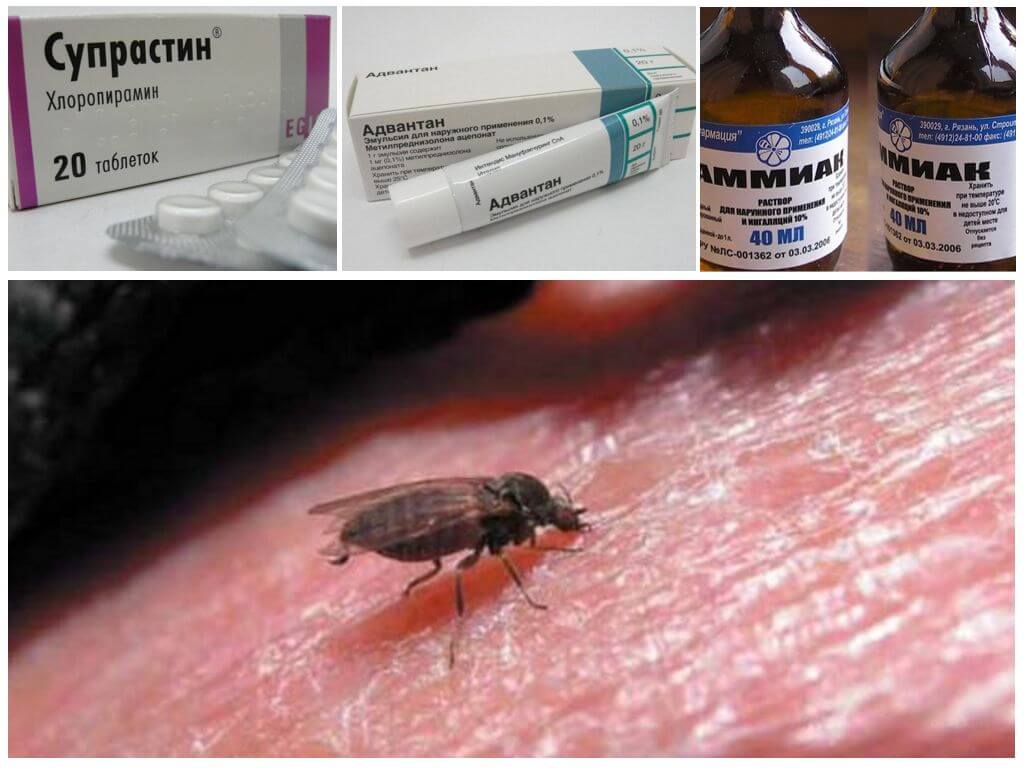
It happens that there is an inadequate response of the body to the action of the allergen of the gadfly. In this case, remove the swelling from the bite by more effective means:
- Suprastin, Tavegil, Claritin will quickly remove the allergy;
- a compress of ammonia, soda solution, any mint toothpaste will cope with itching;
- Anoint the bite with an ointment containing corticosteroids (hydrocortisone, Sinaflan, Advantan) so that wound inflammation does not begin;
- you can use an ointment from the bites of bloodsuckers based on plant components or chemical components.
If it is impossible to use the services of a pharmacy, it is recommended to use natural resources, such as:
- plantain;
- mint;
- dandelion in any part of it;
- yarrow;
- parsley.
There are many more plants that stop the blood and have an astringent and anti-inflammatory effect. It is recommended to treat edema with the help of lemon, onion or garlic, wiping the inflamed area with a slice.
Precautionary measures
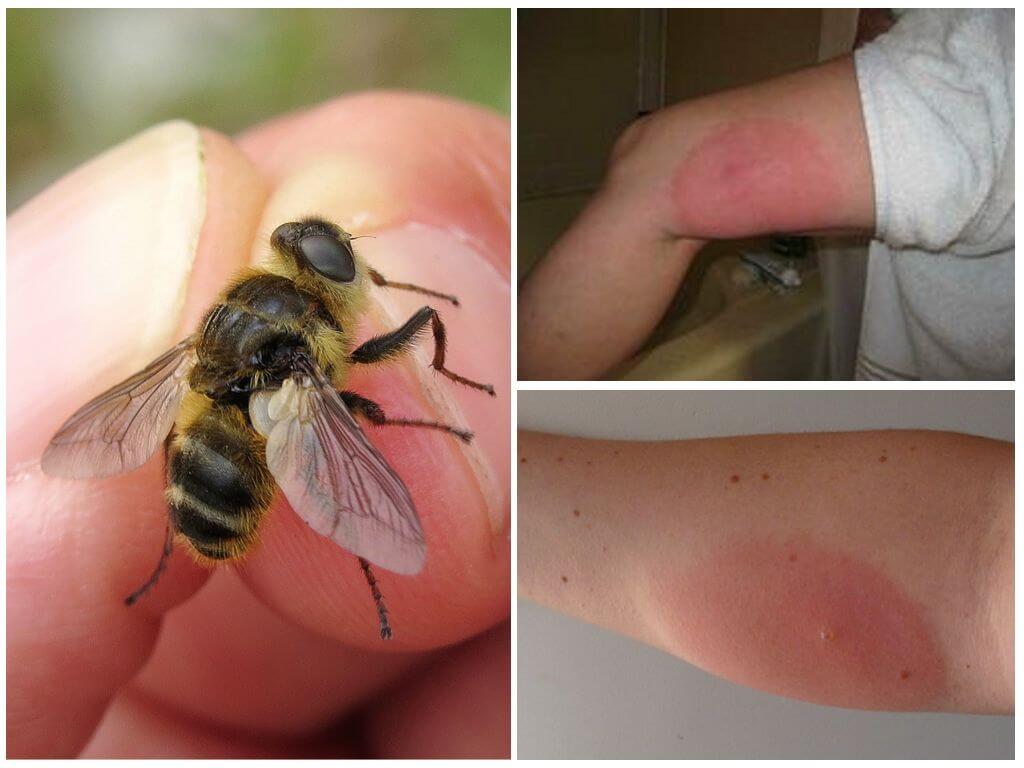
So that the gadfly does not bite on vacation or during work in the open air, it is necessary to observe some conditions:
- Do not wear too bright clothes, as insects react to color;
- it is better not to use sweet perfume, gadfly attracts this smell;
- to stay away from water, grass and thickets - favorite habitats of insects;
- after bathing, wipe the body and change into dry clothes;
- wear light but covering clothes and limbs in the forest;
- use chemical or natural repellents;
- to have mosquito nets on the windows and doors of the house, in tents, so as never to know how the gadfly and horsefly bite on a defenseless person;
- protect the location of cots, close the strollers with special wraps through which insects cannot penetrate.
A bite of the gadfly on the human body always causes pain and swelling of the tissues adjacent to the wound. In the first minutes after the puncture of the skin by a bloodsucker, the bite of the gadfly looks like a daddy. Later, the tumor spreads to neighboring tissues. Sometimes the papule does not turn into an extensive swelling, but becomes a lump at the bite point. So that there is no trace of an insect bite, you can cut out the cone formed by surgery.
Not only people suffer from horseflies. These parasites do not disdain any warm-blooded animals when they need to drink blood to breed their offspring. If there is no living flesh, then they drink blood even from the carrion. Our four-legged favorites are also not immune from the attack of these monsters. Owners of animals do not know how to treat a bite of a gadfly in an animal. After all, the dog can not say anything or show the place of defeat by insects. It is especially dangerous if the midge has bitten an animal in the eye. In this case, the pet may remain blind or die from pain shock. Therefore, if the gadfly has bitten a dog, it is necessary to contact a veterinary clinic.
